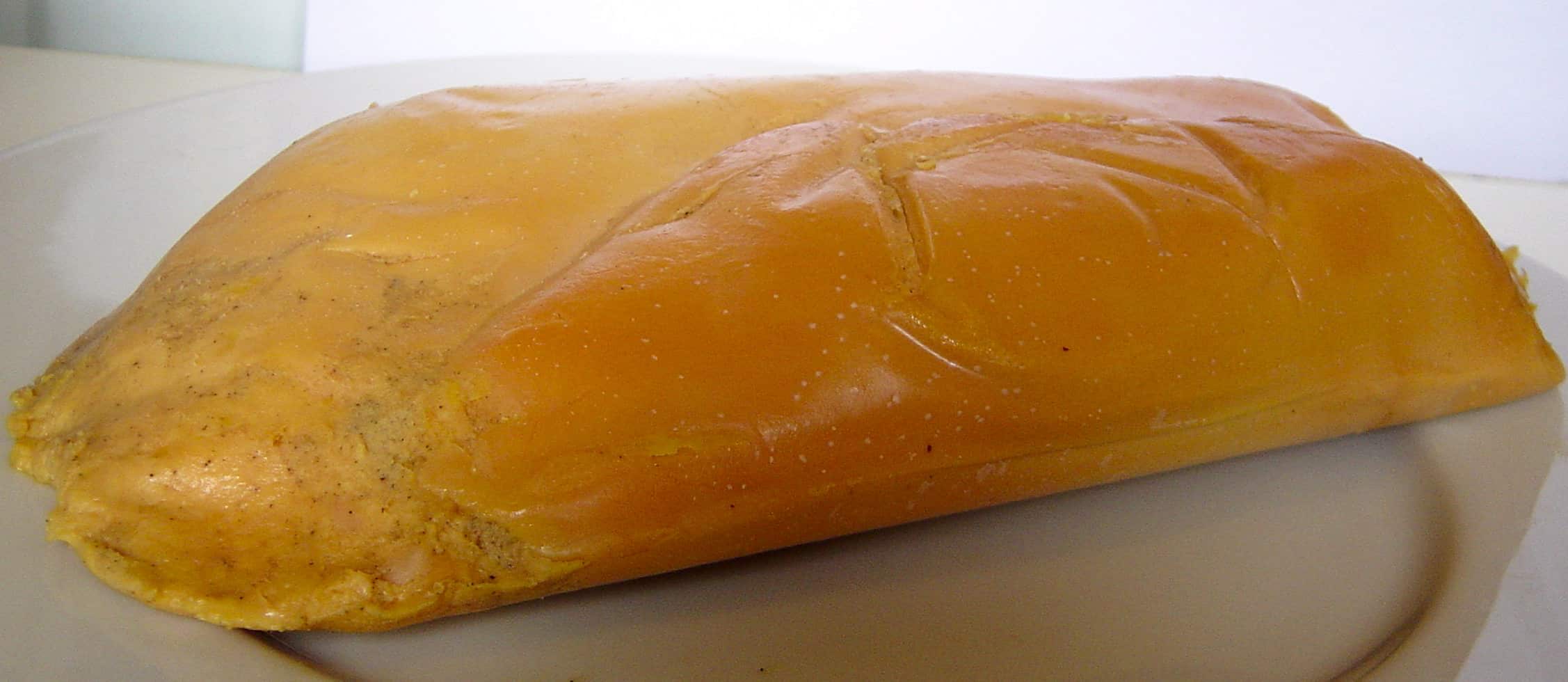Originally featured on One Green Planet.
The New York Times recently ran a story on the upcoming foie gras ban in California. July 1, 2012, the Golden State will join over a dozen nations that have prohibited the production of foie gras, the enlarged liver of a duck or goose produced through force-feeding. Arguments against the production practice have focused on animal welfare concerns, but have largely ignored the human health implications. As I detail in my International Journal of Food Safety, Nutrition and Public Health paper, microscopic infectious protein fibers in foie gras may trigger and accelerate a variety of serious human diseases in susceptible individuals via a “mad cow disease”-like mechanism.
Amyloidosis is a group of potentially fatal diseases in which accumulated misshapen proteins (amyloid) damage body tissues and disrupt organ function. In their paper “Amyloidogenic Potential of Foie Gras,” published in the Proceedings of the National Academy of Sciences, a collaboration of researchers found amyloid deposits in commercially available foie gras and discovered that they could orally induce amyloidosis in a laboratory setting. The principal investigator concluded: “Perhaps people with a family history of Alzheimer’s disease, diabetes, rheumatoid arthritis or other amyloid-associated diseases should avoid consuming foie gras and other foods that may be contaminated.”
What other meat may be contaminated? While ducks under stress deposit amyloid throughout their internal organs, chickens tend to localize amyloid deposits in their joints. The way laying hens are processed, however, means that amyloid deposits found in joints could still end up in certain chicken products.
When laying hens are killed at the end of their productive lives, approximately half are slaughtered for human consumption. In the past, “spent” hens were mainly used for soup (Campbell’s™ and Stouffer’s™ were the major buyers), but to reduce the risk of skeletal splinters from the laying hens’ brittle bones, soup manufacturers now tend to use broiler chickens instead. Today’s spent hens are likely to be extruded into“mechanically separated meat,” a substance used in products such as Slim Jims and McDonald’s Chicken McNuggets. It is this homogenization of birds into products such as broths, meat pastes, and flavorings that may result in joint amyloid finding its way into the food supply.
The chief investigator of the Proceedings paper is quoted as saying “It is not known if there is an increase of Alzheimer’s disease, diabetes or other amyloid-related disease in people who have eaten foie gras.” Indeed, though undercooked duck liver may harbor the brain parasites toxocara or toxoplasma, foie gras consumption and disease has never been studied on a population scale, nor have there been many studies on dietary risk factors for amyloidoses. A striking contrast has been noted, though, between the rates of amyloidosis triggered by leprosy in the United States compared to India. Whereas historically approximately half of autopsied U.S. leprosy victims have shown evidence of amyloidosis, one study of over a thousand leprosy patients in India found not a single case. The researchers conclude: “Consumption of a mainly vegetarian diet in our population and that of meat in Western population has been suggested to be the probable cause of the difference of amyloidosis observed in the two groups of people.” Based on the leprosy studies blaming animal product consumption, contemporary researchers have suggested “dietary modification [to avoid amyloid containing foods] may be of therapeutic potential in preventing [amyloidosis triggering] amyloid fibril formation.”
Dr. Erik Gruys, the former chair of Domestic Animal Pathology at Utrecht University, and colleagues wrote that amyloid deposits in the tissues of food animals such as foie gras and chicken by-products could have “tremendous food safety implications.” “Like prions,” they conclude, “this pathological material should be banned for risk groups of consumers.” The new law in California may therefore safeguard the welfare of both animals and the public.
-Michael Greger, M.D.
